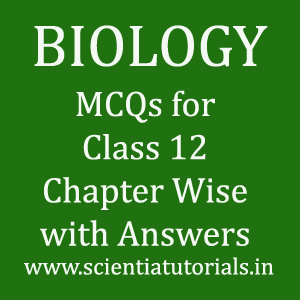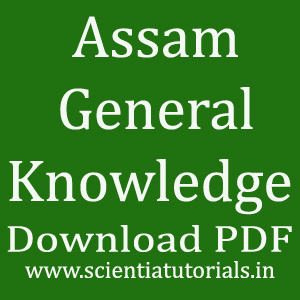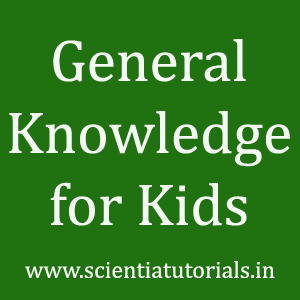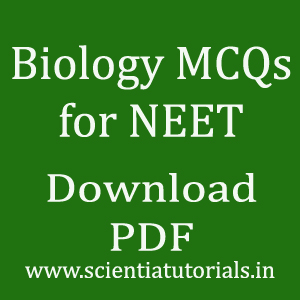Biology MCQs for Class 12 Chapter Wise with Answers
₹ 50
Description
Biology MCQs for Class 12 Chapter Wise with Answers
Chapter 1 Reproduction in Organisms Class 12 Biology MCQs Download PDF
Chapter 2 Sexual Reproduction in Flowering Plants Class 12 Biology MCQs Download PDF
Chapter 3 Human Reproduction Class 12 Biology MCQs Download PDF
Chapter 4 Reproductive Health Class 12 Biology MCQs Download PDF
Chapter 5 Principles of Inheritance and Variation Class 12 Biology MCQs Download PDF
Chapter 6 Molecular Basis of Inheritance Class 12 Biology MCQs Download PDF
Chapter 7 Evolution Class 12 Biology MCQs Download PDF
Chapter 8 Human Health and Disease Class 12 Biology MCQs Download PDF
Chapter 9 Strategies for Enhancement in Food Production Class 12 Biology MCQs Download PDF
Chapter 10 Microbes in Human Welfare Class 12 Biology MCQs Download PDF
Chapter 11 Biotechnology: Principles and Processes Class 12 Biology MCQs Download PDF
Chapter 12 Biotechnology and its Applications Class 12 Biology MCQs Download PDF
Chapter 13 Organisms and Populations Class 12 Biology MCQs Download PDF
Chapter 14 Ecosystem Class 12 Biology MCQs Download PDF
Chapter 15 Biodiversity and Conservation Class 12 Biology MCQs Download PDF
Chapter 16 Environmental Issues Class 12 Biology MCQs Download PDF
SAMPLE
Chapter 1 Reproduction in Organisms
Question: Which of the following groups is formed only of the hermaphrodite organisms?
(a) Earthworm, tapeworm, housefly, frog
(b) Earthworm, tapeworm, sea horse, housefly
(c) Earthworm, leech, sponge, roundworm
(d) Earthworm, tapeworm, leech, sponge
Answer: (d) Earthworm, tapeworm, leech, sponge
Question: Which of the following options shows bisexual animals only?
(a) Amoeba, sponge, leech
(b) Sponge, cockroach, Amoeba
(c) Earthworm, sponge, leech
(d) Tapeworm, earthworm, honeybee
Answer: (c) Earthworm, sponge, leech
Question: Read the following statements and select the incorrect one.
(a) Cucurbits and coconuts are monoecious plants.
(b) Papayas and date palms are dioecious plants.
(c) Leeches and tapeworms are bisexual animals.
(d) Sponges and coelenterates are unisexual animals.
Answer: (d) Sponges and coelenterates are unisexual animals.
Question: Meiosis does not occur in
(a) asexually reproducing diploid individuals
(b) sexually reproducing haploid individuals
(c) sexually reproducing diploid individuals
(d) all of these.
Answer: (a) asexually reproducing diploid individuals
Question: A diploid parent plant body produces ________ gametes and a haploid parent plant body produces ________ gametes.
(a) diploid, haploid
(b) haploid, diploid
(c) diploid, diploid
(d) haploid, haploid
Answer: (d) haploid, haploid
Question: Which of the following organisms has the highest number of chromosomes?
(a) Housefly
(b) Butterfly
(c) Ophioglossum
(d) Onion
Answer: (c) Ophioglossum
Question: In maize, a meiocyte has 20 chromosomes. What will be the number of chromosomes in its somatic cell?
(a) 40
(b) 30
(c) 20
(d) 10
Answer: (c) 20
Question: If a butterfly has chromosome number 360 in its meiocyte (2n). What will be the chromosome number in its gametes?
(a) 380
(b) 190
(c) 95
(d) 760
Answer: (b) 190
Question: In flowering plants, both male and female gametes are non-motile. The method to bring them together for fertilisation is
(a) water
(b) air
(c) pollination
(d) apomixis
Answer: (c) pollination
Question: In which of the following plants, sepals do not fall off after fertilisation and remain attached to the fruit?
(a) Brinjal
(b) Cucumber
(c) Papaya
(d) Bitter gourd
Answer: (a) Brinjal
Question: The wall of the ovary forms
(a) pericarp
(b) fruit wall
(c) fruit
(d) both (a) and (b).
Answer: (d) both (a) and (b).
Question: The term ‘clone’ cannot be applied to offspring formed by sexual reproduction because
(a) offspring do not possess exact copies of parental DNA
(b) DNA of only one parent is copied and passed on to the offspring
(c) offspring are formed at different times
(d) DNA of parent and offspring are completely different
Answer: (a) offspring do not possess exact copies of parental DNA
Question: The male gametes of rice plant have 12 chromosomes in their nucleus. The chromosome number in the female gamete, zygote and the cells of the seedling will be, respectively
(a) 12,24,12
(b) 24,12,12
(c) 12, 24, 24
(d) 24, 12, 24.
Answer: (c) 12, 24, 24
Question: Appearance of vegetative propagules from the nodes of plants such as sugarcane and ginger is mainly because
(a) nodes are shorter than intemodes
(b) nodes have meristematic cells
(c) nodes are located near the soil
(d) nodes have non-photosynthetic cells.
Answer: (b) nodes have meristematic cells
Question: There is no natural death in single celled organisms like Amoeba and bacteria because
(a) they cannot reproduce sexually
(b) they reproduce be binary fission
(c) parental body is distributed among the offspring
(d) they are microscopic.
Answer: (c) parental body is distributed among the offspring
Question: There are various types of reproduction. The type of reproduction adopted by an organism depends on
(a) the habitat and morphology of the organism
(b) morphology of the organism
(c) morphology and physiology of the organism
(d) the organisms habitat, physiology and genetic makeup.
Answer: (d) the organisms habitat, physiology and genetic makeup.
Question: Which of the following is a post-fertilisation event in flowering plants?
(a) Transfer of pollen grains
(b) Embryo development
(c) Formation of flower
(d) Formation of pollen grains
Answer: (b) Embryo development
Question: The number of chromosomes in the shoot tip cells of a maize plant is 20. The number of chromosomes in the microspore mother cells of the same plant shall be
(a) 20
(b) 10
(c) 40
(d) 15
Answer: (a) 20
Question: The growth phase of an organism before attaining sexual maturity is referred to as
(a) juvenile phase
(b) vegetative phase
(c) both (a) and (b)
(d) none of these.
Answer: (c) both (a) and (b)
Question: Select the monocarpic plant out of the following.
(a) Bamboo
(b) Lite hi
(c) Mango
(d) All of these
Answer: (a) Bamboo
Question: Clear cut vegetative, reproductive and senescent phases cannot be observed in
(a) annual plants
(b) perennial plants
(c) biennial plants
(d) ephemeral plants.
Answer: (b) perennial plants
Question: Strobilanthus kunthiana flowers once in
(a) 5 years
(b) 12 years
(c) 20 years
(d) 50 years.
Answer: (b) 12 years
Question: Strobilanthus kunthiana differs from bamboo in
(a) being monocarpic
(b) length of juvenile phase
(c) being polycarpic
(d) none of these.
Answer: (b) length of juvenile phase
Question: Oestrous cycle is reported in
(a) cows and sheep
(b) humans and monkeys
(c) chimpanzees and gorillas
(d) none of these.
Answer: (a) cows and sheep
Question: Which of the following animals show menstrual cycle?
(a) Gorillas and chimpanzees
(b) Monkeys and humans
(c) Orangutans and monkeys
(d) All of these
Answer: (d) All of these
Question: Senescent phase of an organism’s life span can be recognised by
(a) slow metabolism
(b) cessation of reproduction
(c) decreased immunity
(d) all of these
Answer: (d) all of these
Question: If a fungal thallus has both male and female reproductive structures, it will be called
(a) heterothallic
(b) homothallic
(c) dioecious
(d) monoecious
Answer: (b) homothallic
Question: Staminate flowers produce
(a) eggs
(b) antherozoids
(c) fruits
(d) all of these
Answer: (b) antherozoids
Question: Single-celled animals are said to be immortal because
(a) they grow indefinitely in size
(b) they can tolerate any degree of change in temperature
(c) they can reproduce throughout their life span
(d) they continue to live as their daughter cells.
Answer: (d) they continue to live as their daughter cells.
Question: Which of the following has the longest life span?
(a) Banyan tree
(b) tortoise
(c) parrot
(d) Elephant
Answer: (a) Banyan tree
Question: Select the option which arranges the given organisms in ascending order of their life span.
(a) Parrot < Crow < Butterfly < Banyan tree
(b) Butterfly < Crow < Parrot < Crocodile
(c) Fruit fly < Crocodile < Parrot < Banyan tree
(d) Parrot < Tortoise < Dog < Crow
Answer: (c) Fruit fly < Crocodile < Parrot < Banyan tree
Question: ________ is a life process that is not essential for an individual’s survival but for survival of the species.
(a) Growth
(b) Reproduction
(c) Respiration
(d) Nutrition
Answer: (b) Reproduction
Question: ‘Clones’ are individuals that have exactly the same
(a) Lifespan
(b) physiology
(c) growth rate
(d) genetic makeup.
Answer: (d) genetic makeup.
Question: Which one of the following processes results in the formation of clone of bacteria?
(a) Regeneration
(b) Budding
(c) Binary fission
(d) Fragmentation
Answer: (c) Binary fission
Question: Asexual reproduction is seen in members of Kingdom
(a) Monera
(b) Plantae
(c) Animalia
(d) All of these.
Answer: (d) All of these.
Question: During binary fission in Amoeba which of the following organelles is duplicated?
(a) Plasma membrane
(b) Nucleus
(c) Contractile
(d) All of these
Answer: (b) Nucleus
Question: Vegetative propagation is the term used for
(a) sexual reproduction in animals
(b) sexual reproduction in plants
(c) asexual reproduction in animals
(d) asexual reproduction in plants.
Answer: (d) asexual reproduction in plants.
Question: Which of the following is not used for vegetative propagation?
(a) Bud
(b) Bulbil
(c) Turion
(d) Antherozoid
Answer: (d) Antherozoid
Question: Which of the following options shows two plants in which new plantlets arise from the same organ?
(a) Dahlia and ginger
(b) Potato and sweet potato
(c) Dahlia and rose
(d) Potato and sugarcane
Answer: (d) Potato and sugarcane
Question: Refer to the given figure and identify X in it.
(a) Offset
(b) Eyes
(c) Runner
(d) Bulb
Answer: (b) Eyes
Question: Fleshy buds produced in the axil of leaves, which grow to form new plants when shed and fall on ground, are called
(a) bulbs
(b) bulbils
(c) tubers
(d) offsets.
Answer:
(b) bulbils
Question: In which one pair, both the plants can be vegetatively propagated by leaf pieces?
(a) Bryophyllum and Kalanchoe
(b) Chrysanthemum and Agave
(c) Agave and Dioscorea
(d) Bryophyllium and Asparagus
Answer: (a) Bryophyllum and Kalanchoe
Question: If a leaf cell of Agave has x chromosomes then what will be the number of chromosomes in a cell of its bulbil?
(a) 2 x
(b) x/2
(c) x/4
(d) x
Answer: (d) x
Question: Which of the following cannot serve as a vegetative propagule?
(a) A piece of potato tuber with eyes
(b) A middle piece of sugarcane internode
(c) A piece of ginger rhizome
(d) A marginal piece of Bryophyllum leaf
Answer: (b) A middle piece of sugarcane internode
Question: Which of the following options correctly identifies artificial and natural methods of vegetative propagation?
Artificial methods – Natural methods
(a) Grafting – Cutting
(b) Layering – Bulbils
(c) Offset – Tissue culture
(d) Tubers – Rhizomes
Answer: (b) Layering – Bulbils
Question: Sexual reproduction is considered more beneficial than asexual reproduction because
(a) it is not affected by adverse environmental conditions
(b) fertilization is a chance factor
(c) it rapidly multiplies the population
(d) it assists in evolution by producing variations.
Answer: (d) it assists in evolution by producing variations.
Question: Development of new individual from female gamete without fertilisation is termed as
(a) syngamy
(b) embryogenesis
(c) oogamy
(d) parthenogenesis.
Answer: (d) parthenogenesis.
Question: Fertilisation cannot occur in absence of surface water in
(a) Fucus
(b) Funaria
(c) Marsilea
(d) all of these.
Answer: (d) all of these.
Question: Spirogyra is a sexually reproducing alga in which vegetative thallus is haploid. In Spirogyra, meiosis
(a) never occurs
(b) occurs at time of gamete production
(c) occurs after fertilisation
(d) occurs during vegetative growth.
Answer: (c) occurs after fertilisation
Question: Life begin in all sexually reproducing organisms as a
(a) single-celled zygote
(b) double-celled zygote
(c) haploid zygote
(d) haploid gametes.
Answer: (a) single-celled zygote
Question: Which of the following is not correct regarding sexual reproduction ?
(a) It is usually biparental.
(b) Gametes are always formed.
(c) It is a slow process
(d) It involves only mitosis.
Answer: (a) It is usually biparental.
Question: Offsprings of oviparous animals are at greater risk of survival as compared to those of viviparous animals because
(a) proper embryonic care and protection is absent
(b) embryo does not develop completely
(c) progenies are of smaller size
(d) genetic variations do not occur.
Answer: (a) proper embryonic care and protection is absent
Question: Deposition of calcareous shell around zygote occurs in
(a) birds and reptiles
(b) birds and mammals
(c) mammals and reptiles
(d) all of these.
Answer: (a) birds and reptiles
Question: Select the option which shows viviparous animals only,
(a) Lizard, Turtile
(b) Platypus, Crocodile
(c) Cow, Crocodile
(d) Whale, Mouse
Answer: (d) Whale, Mouse
Question: Which of the following animals give birth to young ones?
(a) Ornithorhynchus and Echidna
(b) Macropus and Pteropus
(c) Balaenoptera and Homo sapiens
(d) Both (a) and (c)
Answer: (d) Both (a) and (c)
Question: Viviparity is found in
(a) Sharks
(b) lizards
(c) frogs
(d) birds
Answer: (a) Sharks











